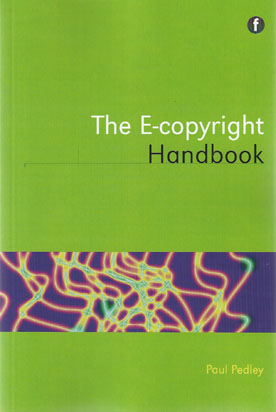
This handbook provides library and information professionals with practical guidance to minimize the risk of copyright infringement in the era of information sharing and online collaborative working.
The book considers how copyright applies to a wide range of electronic content types including APIs, e-books, blogs, wikis, RSS feeds, e-mails, streaming, podcasts, broadcasts, databases, social networking sites and GUIs.
Author Paul Pedley looks at activities which are especially relevant to library and information services such as the lending of electronic content and the mass digitization of content from a library collection, and considers activities undertaken by internet users such as deep linking, filesharing, mashups, and scraping, and the copyright issues associated with those activities.
The text draws upon relevant legislation as well as numerous examples of legal disputes and court decisions from the UK, Europe, and the USA. Highly practicle, the book is packed throughout with tips, case summaries, sample wording, and in each section it also draws attention to useful resources.
This is an invaluable guide for all library and information professionals on how to avoid e-copyright infringements. It will also be an essential reference work for student